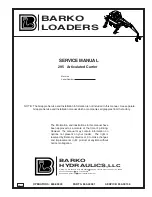
Manuclave Anchor Clamp
User Instructions
Part Number
Material
Length
Width
Anchorage
Opening
Connection
Opening
Weight
Standard /
Regulation
251
Stainless Steel
16 in. (40.6cm)
6.8 in. (17cm)
4.4 in. (11cm)
1.4 in. (3.6cm)
12 lbs. (340g)
OSHA 1910.66,
OSHA 1926.502
252
Stainless Steel
16 in. (40.6cm)
8 in. (20.3cm)
5.5 in. (14cm)
1.4 in. (3.6cm)
13 oz. (369g)
OSHA 1910.66,
OSHA 1926.502
General Safety Information
These
User Instructions
are not to be removed except by the
user of this equipment.
User Instructions
must always be
available to the user.
Compliant fall protection and emergency rescue systems
help prevent serious injury during fall arrest. Users must
read and understand the
User Instructions
provided with the
product and be properly trained by their employer prior to
use per OSHA 29 CFR 1910.66 and 1926.503 or applicable
local standards.
Misuse or failure to follow warnings and
instructions may result in serious personal injury or
death.
For proper use, see supervisor,
User Instructions
, or
call Technical Service at 1-800-560-1094.
Purpose
The 3M Manuclave Anchor Clamps are designed to be used
as part of a personal fall arrest system, to help limit the fall
arrest forces in the event of a fall.
Use Instructions
1. Failure to follow all instructions and limitations on the
use of Manuclave Anchor Clamps may result in serious
personal injury or death.
2. Before using a personal fall arrest system, employees
shall be trained in accordance with the requirements of
OSHA’s 29 CFR 1910.66 in the safe use of the system
and its components.
3. Personal fall arrest systems, including Manuclave
Anchor Clamps, shall be inspected prior to each use
for wear, damage, and other deterioration. Defective
components must be immediately removed from service,
in accordance with the requirements of OSHA’s 29 CFR
1910.66 and 1926.502.
4. The complete fall protection system must be planned
(including all components, calculating fall clearance, and
swing fall) before using.
5. Users must have a rescue plan, and the means at
hand to implement it, that provides the prompt rescue
of employees in the event of a fall or assures that
employees are able to rescue themselves.
6. Store Manuclave Anchor Clamps in a cool, dry, clean
environment, out of direct sunlight, when not in use.
7. After a fall occurs, the Manuclave Anchor Clamp must
be removed from service and destroyed immediately.
Use Limitations
1. Manuclave Anchor Clamps are designed for single users
only.
2. Per OSHA’s 29 CFR1910.66 and 1926.502 Manuclave
Anchor Clamps must only be used on structures capable
of supporting at least at least 5,000 pounds (22.2 kN)
per employee attached, or shall be designed, installed,
and used as part of a complete personal fall arrest system
which maintains a safety factor of at least two, under the
supervision of a qualifi ed person.
3. Manuclave Anchor Clamps are designed to be used in
temperatures ranging from -40ºF to +130ºF (-40°C to
+54°C).
4. Do not expose Manuclave Anchor Clamps to chemicals
or harsh solutions which may have a harmful effect.
Contact 3M Technical Service with any questions.
5. Caution must be taken when using Manuclave Anchor
Clamps near moving machinery, electrical hazards,
sharp edges, or abrasive surfaces, as contact may cause
equipment failure, personal injury, or death.
6. Minors, pregnant women and anyone with a history
of either back or neck problems should not use this
equipment.
7. Do not use or install equipment without proper training
from a “competent person” as defi ned by OSHA’s 29
CFR 1926.32(f).
8. Only 3M, or persons or entities authorized in writing by
3M, shall make repairs or alterations to the equipment.
Compatibility Limitations
All 3M Manuclave Anchor Clamps must only be coupled to
compatible connectors. OSHA’s 29 CFR 1926.502 prohibits
snaphooks from being engaged to certain objects unless two
requirements are met: it must be a locking type snaphook,
and it must be “designed for” making such a connection.
“Designed for” means that the manufacturer of the snaphook
specifi cally designed the snaphook to be used to connect to
the equipment listed. The following connections must be
avoided, as they are conditions that can result in rollout when
a nonlocking snaphook is used:
•
Direct connection of a snaphook to horizontal lifeline.
•
Two (or more) snaphooks connected to one D-ring.
•
Two snaphooks connected to each other.
•
A snaphook connected back on its integral lanyard.
•
A snaphook connected to a webbing loop or webbing
lanyard.
•
Improper dimensions of the D-ring, rebar, or other
connection point in relation to the snaphook dimensions
that would allow the snaphook keeper to be depressed by
a turning motion of the snaphook.
Performance
All Manuclave Anchor Clamps meet a 5,000 lb. tensile load.
WARNING




















